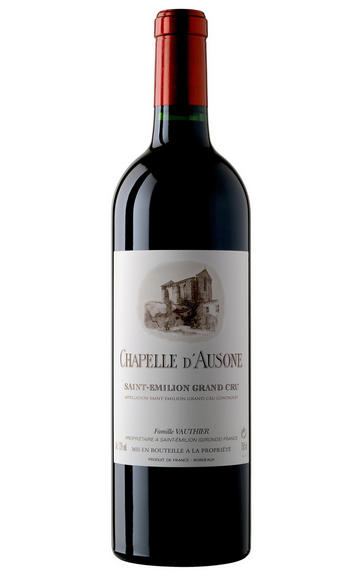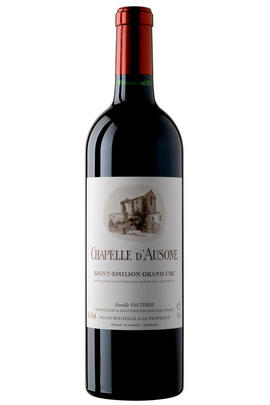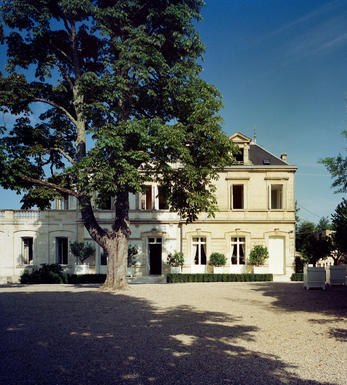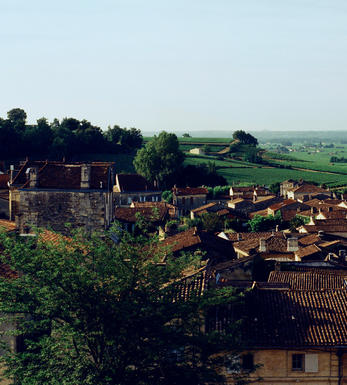
2012 Chapelle d'Ausone, St Emilion, Bordeaux

Critics reviews
One can't say enough about the fantastic job that Alain Vauthier and his daughter have done at this historic property on the decomposed limestone slopes of St.-Emilion. About half of their production goes into the second wine, Chapelle DAusone, which indicates the compulsive perfectionist attitude of the Vauthiers.
The 2012 Chapelle DAusone has a dense ruby/purple colour and is rich, broad and expansive, with notes of plum, blueberry and black raspberry fruit, powdered chalk and flowers. The wine is medium to full-bodied, beautifully pure and long and rich. This is better than many of the vintages of Ausone in the 1940s, 50s, 60s, 70s and 80s, which says a lot about what Vauthier has achieved.
Drink over the next 20-25 years
Robert M. Parker, Jr., Wine Advocate (April 2015)
A little reduced at the moment. Some sweet oak spice and a touch of char, though that may be reinforced by the reductive smokiness. Dense and chewy but very fresh and pure fruited. Tastes as if there is a touch of Syrah! Fine and compact tannins. Very promising. Mouthwatering finish from both the freshness and the tannins.
Julia Harding MW, jancisrobinson.com (April 2013)
The second wine, the 2012 La Chapelle d’Ausone, is an equal part blend of Merlot and Cabernet Franc displaying an inky/blue/purple color as well as a sweet kiss of blueberry, blackberry, crushed rock and spring flower characteristics. Remarkably, no one at a blind tasting would ever believe this medium to full-bodied effort is a second wine – it’s that impressive! It should drink well for 15-20 years.
Robert Parker, Wine Advocate (April 2013)
About this WINE

Château Ausone
Château Ausone is a wine estate in St Emilion on the Right Bank of Bordeaux. It takes its name from the poet Ausonius, who is thought to have owned a villa where the estate stands today – just outside the medieval village of St Emilion. Ausone’s vineyards sit atop St Emilion’s limestone plateau and extend in terraces down the côtes. There are just over six hectares of vines planted today, mostly Cabernet Franc along with Merlot. The team practice organic and biodynamic viticulture though without certification.
The estate belongs to the Vauthier family, led by Alain Vauthier and his children, Pauline and Edouard. In 1955, Ausone was ranked at the very top of the St Emilion classification – as Premier Grand Cru Classé A – alongside Château Cheval Blanc. In 2021, both Ausone and Cheval Blanc announced that they were voluntarily withdrawing from the classification.
Ausone is known for its structured, long-lived wines. A second wine, Chapelle d’Ausone, was introduced in the 1990s. The Vauthier family also own a number of other properties nearby in St Emilion, including Château Moulin Saint-Georges, Château La Clotte and Château de Fonbel.

St Émilion
St Émilion is one of Bordeaux's largest producing appellations, producing more wine than Listrac, Moulis, St Estèphe, Pauillac, St Julien and Margaux put together. St Emilion has been producing wine for longer than the Médoc but its lack of accessibility to Bordeaux's port and market-restricted exports to mainland Europe meant the region initially did not enjoy the commercial success that funded the great châteaux of the Left Bank.
St Émilion itself is the prettiest of Bordeaux's wine towns, perched on top of the steep limestone slopes upon which many of the region's finest vineyards are situated. However, more than half of the appellation's vineyards lie on the plain between the town and the Dordogne River on sandy, alluvial soils with a sprinkling of gravel.
Further diversity is added by a small, complex gravel bed to the north-east of the region on the border with Pomerol. Atypically for St Émilion, this allows Cabernet Franc and, to a lesser extent, Cabernet Sauvignon to prosper and defines the personality of the great wines such as Ch. Cheval Blanc.
In the early 1990s there was an explosion of experimentation and evolution, leading to the rise of the garagistes, producers of deeply-concentrated wines made in very small quantities and offered at high prices. The appellation is also surrounded by four satellite appellations, Montagne, Lussac, Puisseguin and St. Georges, which enjoy a family similarity but not the complexity of the best wines.
St Émilion was first officially classified in 1954, and is the most meritocratic classification system in Bordeaux, as it is regularly amended. The most recent revision of the classification was in 2012

Cabernet Sauvignon Blend
Cabernet Sauvignon lends itself particularly well in blends with Merlot. This is actually the archetypal Bordeaux blend, though in different proportions in the sub-regions and sometimes topped up with Cabernet Franc, Malbec, and Petit Verdot.
In the Médoc and Graves the percentage of Cabernet Sauvignon in the blend can range from 95% (Mouton-Rothschild) to as low as 40%. It is particularly suited to the dry, warm, free- draining, gravel-rich soils and is responsible for the redolent cassis characteristics as well as the depth of colour, tannic structure and pronounced acidity of Médoc wines. However 100% Cabernet Sauvignon wines can be slightly hollow-tasting in the middle palate and Merlot with its generous, fleshy fruit flavours acts as a perfect foil by filling in this cavity.
In St-Emilion and Pomerol, the blends are Merlot dominated as Cabernet Sauvignon can struggle to ripen there - when it is included, it adds structure and body to the wine. Sassicaia is the most famous Bordeaux blend in Italy and has spawned many imitations, whereby the blend is now firmly established in the New World and particularly in California and Australia.


Buying options
Add to wishlist
Description
In contrast to the rest of the Vauthier estate, the Cabernet Franc in the Ch. Ausone vineyard was, paradoxically, more successful than Merlot. Ch. Ausone’s extraordinary terroir, with its sponge-like clays to absorb water during the spring and autumn rains yet deliver water parsimoniously during the hot summer, kept the Cabernet Franc in perfect health.
So much good Cabernet Franc allows it to comprise 60% of Chapelle d’Ausone’s blend, with 25% Merlot and even 15% Cabernet Sauvignon. The latter is a tiny proportion of the surface, just on the steepest south-facing slopes. Principally from the château’s young vines, there is a strictness to the wine, and puritan worthiness, yet it remains fresh, direct and assertive.
Mark Pardoe MW, Wine Buying Director, Berry Bros. & Rudd
wine at a glance
Delivery and quality guarantee